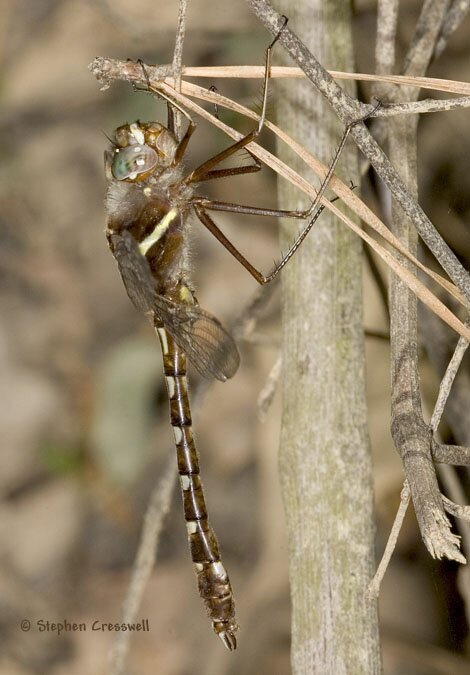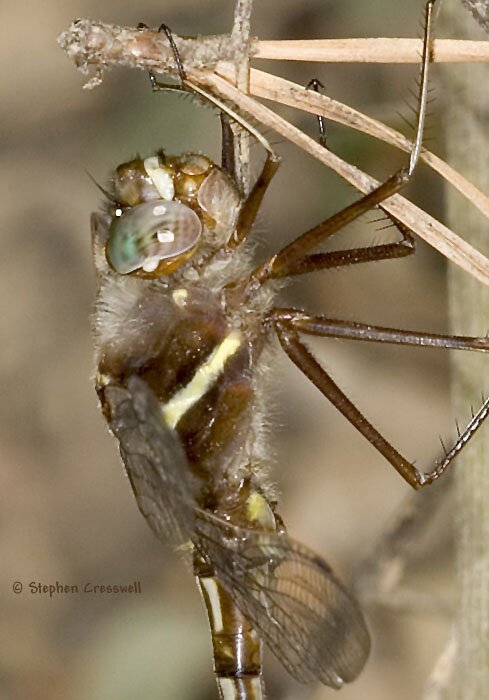

Family: Macromiidae
Length: typically 52-58 mm
Male Stream Cruisers have a brown thorax with pale hairs, and a single yellow lateral stripe. There is also a pale dorsal bar at the base of the wings. On the dorsal surface of the abdomen there are paired yellow spots, sometimes fused. The terminal appendages are pale on the dorsal surfaces. The abdomen is mildly clubbed, primarily at segments 8 and 9. The eyes are brown to pale green.
Female Stream Cruisers have similar markings, but the abdomen is thicker and unclubbed.
Look for Stream Cruisers along creeks and small rivers that have sandy bottoms; they avoid fast-moving streams. The species is sometimes found at lakes or ponds. The flight period takes in May, June, and July.
Stream Cruisers hang from vegetation when they perch, typically less than a meter off the ground. Males, as the familys common name says, cruise or patrol along the shore.
In this family (Macromiidae), females oviposit by tapping their abdomen against the waters surface; the eggs drop to the sandy bottom.
Larvae crawl away from the water for their final molt, up to 30 meters away (Nikula, Loose, and Burne, 2003).

Most records of Didymops transversa in West Virginia have been from the mountain counties in the eastern part of the state.

